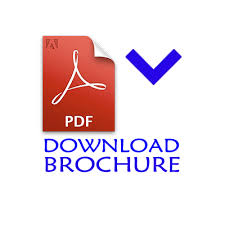Ali Khamesipour
University of Medical Sciences (TUMS), Iran
Title: Immune response in leishmaniasis in regard to vaccine development
Biography
Biography: Ali Khamesipour
Abstract
Leishmaniasis is a parasitic neglected disease reported from over 100 countries. The available tools to control the disease control are not fully effective. The only tool to control a disease like leishmaniasis is development of effective vaccines. There is almost no vaccine available against any infectious disease caused by intracellular parasites in which cellular immune response is responsible for protection.
In murine model of leishmaniasis, the type of immune response which generated govern the outcome of the disease; in resistant strains of mice Th1 type response is generated and a lesion similar to human CL develops, the lesion heals spontaneously and upon healing the animals are protected against further lesion development, in contrary the same infection in susceptible BALB/c mice induces Th2 response which accompanies a severe systemic disease and eventually every infected mouse succumbed to the disease. Although in murine model of leishmaniasis, generation of Th1 response induces cure and protection against further infection, but generation Th1 or Th2 is not the whole story. The surrogate marker(s) of protection in human intracellular infections such as leishmaniasis is not well known. In human leishmaniasis, cure and protection accompany with induction of strong immune response which is shown in vivo by leishmanin skin test and in vitro, by a high level of IFN-γ, low level of IL-5 and IL-10 which is an indication of induction of Th1 response. A Th2 response is seen in visceral leishmaniasis, and non-healing cutaneous leishmaniasis (CL) refractory to treatment. Protection in CL caused by Leishmania major, is mediated by the expansion of antigen specific IFN-γ producing CD4+ and CD8+ T cells. Memory T cell population is responsible for Leishmania-induced IFN-γ production. Effector memory T cells are responsible for protection against Leishmania infection.
Recent Publications
- Elikaee S, Mohebali M, Rezaei S, Eslami H, Khamesipour A, Keshavarz H, Eshraghian MR. Development of a new live attenuated Leishmania major p27 gene knockout: Safety and immunogenicity evaluation in BALB/c mice. Cell Immunol. 2018 Oct;332:24-31.
- Nateghi Rostami M, Seyyedan Jasbi E, Khamesipour A, Miramin Mohammadi A, Plasma levels of tumor necrosis factor-alpha (TNF-α), TNF-α soluble receptor type 1 (sTNFR I) and IL-22 in human leishmaniasis. Trop Biomed 2015 Sep;32(3):478-84.
- Hosseini-Vasoukolaei N, Mahmoudi AR, Khamesipour A Yaghoobi-Ershadi MR, Kamhawi Sh, Valenzuela JG, Arandian MH, Mirhendi H, Emami Sh, Saeidi Z, Idali F, Jafari R, Jeddi-Tehrani M, Akhavan AA. Seasonal and Physiological Variations of Phlebotomus papatasi Salivary Gland Antigens in Central Iran. J. of Arthropod-Borne Dis. 2015. 27;10(1):39-49.
- Khamesipour A. Therapeutic vaccines for leishmaniasis. Expert Opin Biol Ther. 2014 Jul 31:1-9.
- Davoudi N, Khamesipour A Mahboudi F, McMaster WR. A dual drug sensitive L. major induces protection without lesion in C57BL/6 mice. PLoS Negl Trop Dis. 2014 May 29;8(5):e2785.
- Khamesipour A. The Need to Teach Vaccine Safety to Basic Scientists and Public Health Officials. Current Drug Safety, 2015;10(1):76-9.
Leishmaniasis is a parasitic neglected disease reported from over 100 countries. The available tools to control the disease control are not fully effective. The only tool to control a disease like leishmaniasis is development of effective vaccines. There is almost no vaccine available against any infectious disease caused by intracellular parasites in which cellular immune response is responsible for protection.
In murine model of leishmaniasis, the type of immune response which generated govern the outcome of the disease; in resistant strains of mice Th1 type response is generated and a lesion similar to human CL develops, the lesion heals spontaneously and upon healing the animals are protected against further lesion development, in contrary the same infection in susceptible BALB/c mice induces Th2 response which accompanies a severe systemic disease and eventually every infected mouse succumbed to the disease. Although in murine model of leishmaniasis, generation of Th1 response induces cure and protection against further infection, but generation Th1 or Th2 is not the whole story. The surrogate marker(s) of protection in human intracellular infections such as leishmaniasis is not well known. In human leishmaniasis, cure and protection accompany with induction of strong immune response which is shown in vivo by leishmanin skin test and in vitro, by a high level of IFN-γ, low level of IL-5 and IL-10 which is an indication of induction of Th1 response. A Th2 response is seen in visceral leishmaniasis, and non-healing cutaneous leishmaniasis (CL) refractory to treatment. Protection in CL caused by Leishmania major, is mediated by the expansion of antigen specific IFN-γ producing CD4+ and CD8+ T cells. Memory T cell population is responsible for Leishmania-induced IFN-γ production. Effector memory T cells are responsible for protection against Leishmania infection.
Recent Publications
- Elikaee S, Mohebali M, Rezaei S, Eslami H, Khamesipour A, Keshavarz H, Eshraghian MR. Development of a new live attenuated Leishmania major p27 gene knockout: Safety and immunogenicity evaluation in BALB/c mice. Cell Immunol. 2018 Oct;332:24-31.
- Nateghi Rostami M, Seyyedan Jasbi E, Khamesipour A, Miramin Mohammadi A, Plasma levels of tumor necrosis factor-alpha (TNF-α), TNF-α soluble receptor type 1 (sTNFR I) and IL-22 in human leishmaniasis. Trop Biomed 2015 Sep;32(3):478-84.
- Hosseini-Vasoukolaei N, Mahmoudi AR, Khamesipour A Yaghoobi-Ershadi MR, Kamhawi Sh, Valenzuela JG, Arandian MH, Mirhendi H, Emami Sh, Saeidi Z, Idali F, Jafari R, Jeddi-Tehrani M, Akhavan AA. Seasonal and Physiological Variations of Phlebotomus papatasi Salivary Gland Antigens in Central Iran. J. of Arthropod-Borne Dis. 2015. 27;10(1):39-49.
- Khamesipour A. Therapeutic vaccines for leishmaniasis. Expert Opin Biol Ther. 2014 Jul 31:1-9.
- Davoudi N, Khamesipour A Mahboudi F, McMaster WR. A dual drug sensitive L. major induces protection without lesion in C57BL/6 mice. PLoS Negl Trop Dis. 2014 May 29;8(5):e2785.
- Khamesipour A. The Need to Teach Vaccine Safety to Basic Scientists and Public Health Officials. Current Drug Safety, 2015;10(1):76-9.

